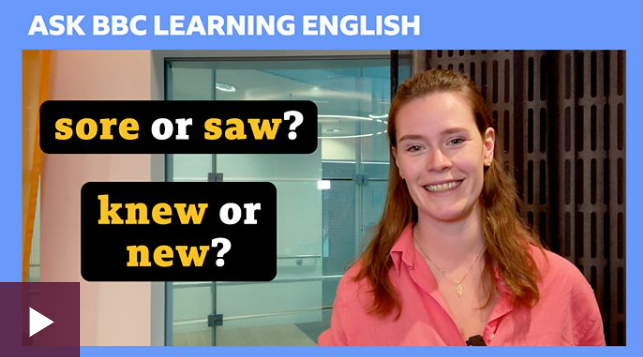Introduction
Marta has sent us a question. She wants to know how to identify words that have the same pronunciation but different meaning.
Beth’s top tips!
1. Think about the situation you’re in and what is most likely to be said. Where are you? Who are you talking to? What is happening? If you’re outside playing sport, are you more likely to hear ‘bat’ 🏏 or ‘bat’ 🦇? Both are pronounced /bæt/.
2. Use grammar to work out what the word could be. For example, ‘soar’, ‘saw’ and ‘sore’ are all pronounced /sɔː/.
- soar (verb in the infinitive that means ‘fly’) e.g. ‘is /sɔː/ing’ can only be ‘is soaring’
- saw (past simple verb of ‘see’) e.g. ‘I /sɔː/ it’ can only be ‘I saw it’
- sore (adjective that means you have pain) e.g. ‘Something is /sɔː/’ can only be ‘Something is sore’
3. Learn common homonyms and think about what the most common word is.
- saw (very common)
- soar (not common)
- sore (not common)
Here are some other examples of homonyms – new/knew, ate/eight, see/sea, won/one, flower/flour, sell/cell, bark, trunk, park, rock, row and there are lots more!
4. Sometimes two words together sound like two different sequences of words. For example, four candles/fork handles, ice cream/I scream. This is often because of something that happens in pronunciation called connected speech. To learn about this, watch Tim’s Pronunciation Workshop.
Thanks to Marta studying at the English school Rose of York for participating in this video.
